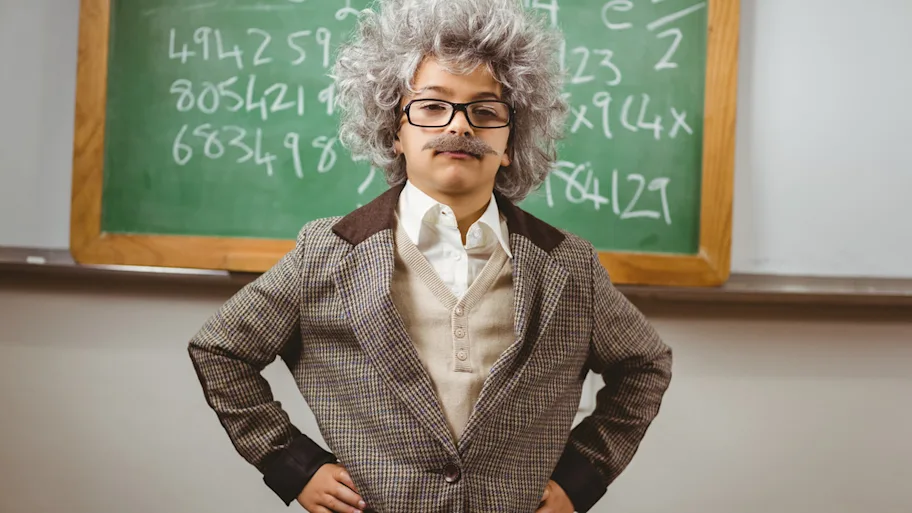
- Science News
- Young Minds
- The Einstein–Besso Manuscript
The Einstein–Besso Manuscript
A Landmark on Einstein’s Road to the General Theory of Relativity

By Hanoch GutfreundProfessor of Physics and the Academic Head of the Albert Einstein Archives, The Hebrew University of Jerusalem, Israel
Original handwritten manuscripts of important documents in the history of mankind have a special charm as well as an emotional and aesthetic appeal. They are displayed as cultural treasures in museums and at public exhibitions, and are purchased by collectors at public auctions. They give us a sense of kinship with the author, a glimpse into his or her creative process and a sense of virtual presence in the time and place of their origin. Such is the Einstein-Besso manuscript, which was purchased on November 23rd, 2021, at an auction in Paris organized by the famous auction company Christie’s, for about 13 million dollars.
Michele Besso, a mechanical engineer, was a lifelong friend of Albert Einstein. They met as students at the Federal Technical University in Zurich, and later were colleagues at the Swiss Patent Office in Bern. Besso was an interested listener who was able to pose questions that would stimulate Einstein, in their frequent and long conversations, , to discuss, clarify and develop his ideas. Besso’s role in this process was so important that Einstein’s seminal article introducing the special theory of relativity contains no references, only an acknowledgment to his faithful friend and colleague Michele Besso: “In conclusion, let me note that my friend and colleague M. Besso steadfastly stood by me in my work on the problem here discussed, and that I am indebted to him for many valuable suggestions.”
In 1912, Einstein was appointed as full professor at the university in Zurich, where he spent his student years. For the next few years, he worked intensively on a new theory of gravity which was completed in November 1915, and is known as the general theory of relativity. In early 1913, Einstein published a preliminary version of this theory, known as the Entwurf (in German – draft) theory. We know today that this theory is not correct, nevertheless, it served as an important step towards the final theory and contains some fundamental features of the latter.
In 1913, Einstein and Besso collaborated to calculate the orbit of planet Mercury on the basis of the Entwurf theory. Besso had always been thought as an important sounding board for Einstein, never as a serious collaborator. But in this case, their collaboration was much more on equal footing than on previous occasions. Since the middle of the 19th century, it was known that the motion of Mercury’s orbit shows a small deviation from Newton laws of planetary motion. The axis of its elliptic orbit rotates, as seen from the sun by about 550 seconds of a degree per century. As the orbit rotates in space, its perihelion (the point of closest distance from the sun) advances accordingly (see Figure 1). This effect is known as the precession of the perihelion of Mercury. A full circle is 360 degrees, a degree is 3600 seconds, thus 550 seconds per century constitutes a tiny effect. Moreover, most of it could be explained by the influence of neighboring planets, but 43 seconds of arc remained unaccounted for. Already in 1907, when Einstein launched the search for a general theory of relativity, he identified the explanation of this apparent anomaly as one of the tests of the new theory.

Figure 1 – A schematic representation of he precession of the perihelion of planet Mercury. In each rotation of Mercury around the Sun, there is a gradual small shift in the orientation of its axis of rotation.
The main goal of the Einstein and Besso collaboration to see whether the new theory could account for this tiny discrepancy between astronomical observations and the prediction of Newtonian theory for the motion of planet Mercury. Their mathematical derivations and numerical calculations fill more than fifty pages, of the so-called Einstein-Besso manuscript, about half of them in Einstein’s handwriting, the other half in Besso’s handwriting (Figure 2). Most of them can be dated to June 1913. Einstein and Besso found that the early version of the general theory of relativity could account for an anomalous rotation of the orbit of Mercury of only 18 seconds of arc per century. Thus, it failed to solve this puzzle. It was solved in November 1915, when a similar calculation on the basis of the final version of general relativity produced the expected 43 seconds per century. Einstein later reported that when he saw that his theory predicted the observed result, he was so excited that he suffered heart palpitations and could not work for several days.
In early 1914, Einstein sent Besso the notes of what they had done up to that point, urging his friend to finish the project. This is how these notes were preserved in Besso’s family. They were sold and resold, until they appeared at the recent auction in Paris. One should mention that this manuscript contains also derivations of other consequences of the Entwurf theory, but they are of lesser significance of what is described above. Moreover, these other derivations contain some errors, so that their conclusion is invalid.

Figure 2 – The first page of the Einstein-Besso manuscript, in Einstein’s handwriting. Einstein derives here the gravitational field of the sun. In subsequent pages he will derive the equation of motion of Mercury in this field.
The Einstein-Besso manuscript is one of two canonical manuscripts on the road to the general theory of relativity. The other one is known as the Zurich notebook from the fall of 1912. This notebook contains dozens of pages of mathematical derivations, in Einstein’s handwriting, with very few textual remarks. It documents Einstein’s learning the basic concepts of the mathematical methods necessary to make progress on his quest for the new theory. Actually, it already contains the core of the final theory, but due to a misinterpretation of his results, Einstein abandoned them and formulated the preliminary Entwurf theory. He abandoned the latter in 1915 and returned to what he has already achieved in 1912, in order to complete the formulation of the general theory of relativity as it is known today. The original Zurich notebook is included in the Albert Einstein Archives at the Hebrew University of Jerusalem.
The Einstein-Besso manuscript and the Zurich notebook give us a unique opportunity to look over Einstein’s shoulder while he is at work during the most intensive and most creative phase of his scientific career leading to his scientific masterpiece – the general theory of relativity.
In a separate article Prof. Gutfreund presents the principles of this theory and tells the story of the confirmation of one of its predictions, which made Einstein a world celebrity overnight.






